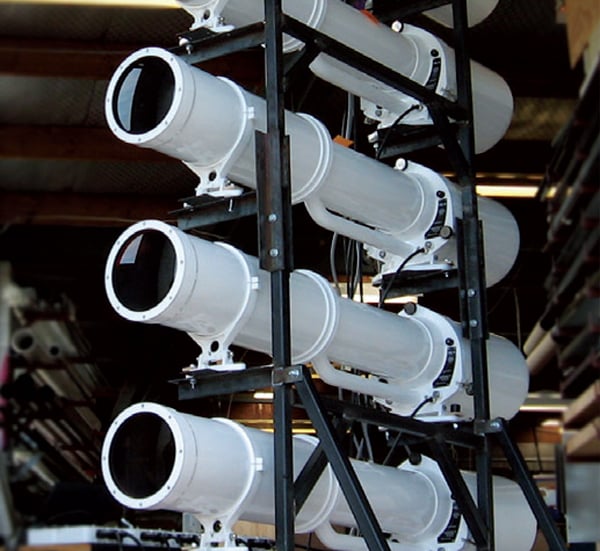 The challenge was how to provide the required day range considering the standard 5° subtense PEL light could only deliver around 3NM for the red and green sectors. The day range could be increased by using multiple PEL lights each mounted above the other. This had been done previously by using fixed sector PEL lights, but had not been done before using multiple Oscillating boundary units. To use multiple Oscillating boundary lights was technically challenging as the oscillating mechanism of each PEL light is required to be in perfect unison in order for multiple units to look and behave as a single more intense Light.
The challenge was how to provide the required day range considering the standard 5° subtense PEL light could only deliver around 3NM for the red and green sectors. The day range could be increased by using multiple PEL lights each mounted above the other. This had been done previously by using fixed sector PEL lights, but had not been done before using multiple Oscillating boundary units. To use multiple Oscillating boundary lights was technically challenging as the oscillating mechanism of each PEL light is required to be in perfect unison in order for multiple units to look and behave as a single more intense Light.
Background
As part of the Port deepening project the Port of Durban was looking for new entrance lights that could provide a day time range of around 6NM. The lights needed to be flexible enough to be able to be used for the temporary channel while the dredging was being undertaken, as well as marking the final channel once the project was completed. Vega PEL lights with oscillating boundary were the favoured solution in order to provide lateral movement information to the incoming Vessels.
Solutions
The range requirement of the project was achieved using 6 x 5° PEL‐6 lights one mounted above the other. Synchronisation of the oscillating boundaries between the lights was achieved using a 6‐axis motion controller to drive the linear actuators. Considering 6 lights were being used the boundary resolution was measured at 1.5 minutes of arc. This compares favourably with a resolution of 1 minute of arc for a single PEL light. In order to save the added cost of needing new filters when converting from the temporary to final entrance channels the same filter glass would be used and the width of the channel easily changed by changing the fixed filter plate of the PEL lights.
To ensure all 6 PEL lights changed intensity at the same time between day and night a single LDR was used for all lights. For this project the standard oscillating boundary mechanism had to be replaced with a linear actuator driven by a voice coil and its position measured to an accuracy of 50 microns. These actuators were driven by a 6‐axis Galil motion controller. The boundary accuracy of the 6 PEL lights working together is dependent on the ability to accurately position the centre of the filter glass and the stroke of the oscillating boundary. If one or more PEL lights are not in synchrony they are switched off to prevent a false signal being generated. The control system will then continually retry to synchronise non complying PEL lights.
Monitoring
The 6 PEL lights were supplied pre wired for VegaWeb monitoring.

